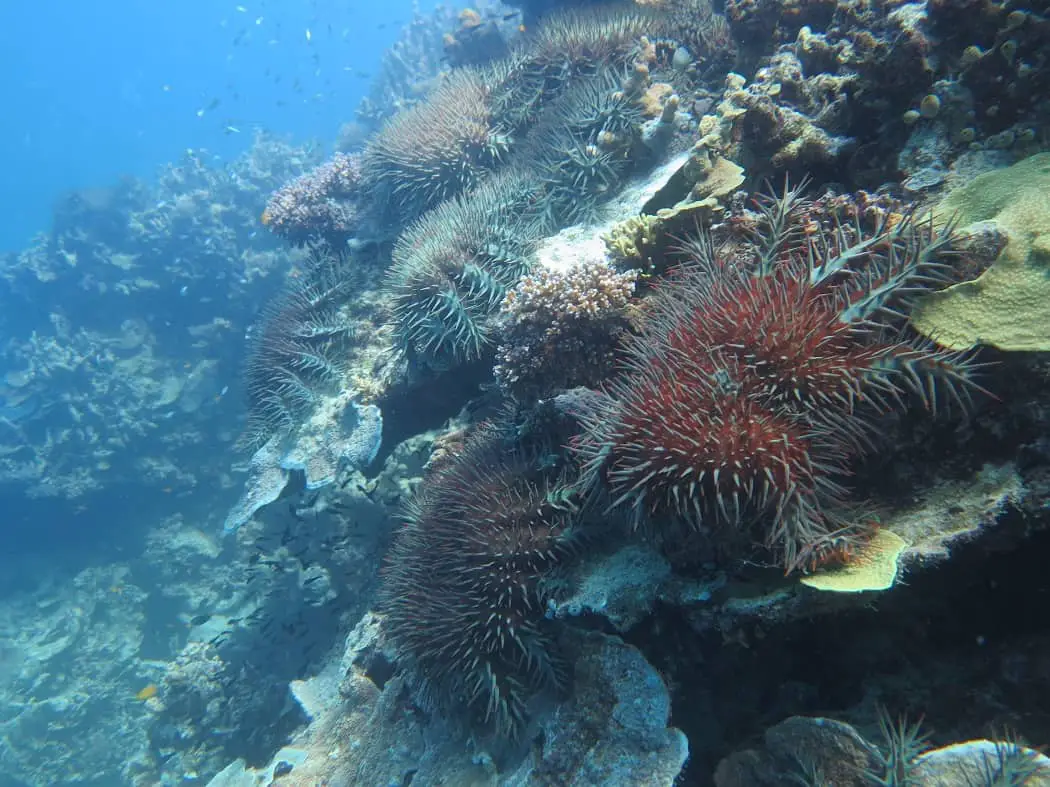Are Starfish Poisonous? (Explained)
Starfish are famous for their colorful, beautiful appearance but have you wondered if they’re poisonous? In this blog post, we’ll talk all about that. However, let’s begin with a quick answer:
Most starfish are not poisonous, and they can’t bite or sting you. However, there’s a species called crown-of-thorns starfish that spines are venomous and can cause a sharp, stinging pain if pierced through the skin.
However, that certainly doesn’t tell the whole story. Below I’ll explain more about whether starfish can bite you or not or if they can sting you. Furthermore, I’ll explain more about the poisonous species of starfish and explain more about the sting symptoms as well as the treatment. Read on!
Do starfish bite?
When we think about potentially dangerous animals, we immediately consider whether they can bite us or not. Starfish cannot bite simply because they don’t have teeth. They do have a mouth opening at the center of the underside of their bodies (oral side), but they can’t harm you with it.
So how do they eat? Because of a lack of teeth, they don’t bite or chew their food. Instead, they pull the stomach out of their bodies through the mouth and directly digest the prey such as oysters, clams, or mussels.
Starfish have a very unique digestive system with two stomachs, and if you’d like to read more about it, check my other blog post: “How Do Starfish Eat?”.
Do starfish sting?
Like all phylum Echinodermata species such as sea urchins or sand dollars, starfish bodies are covered with spines. Short spines cover all sea stars’ bodies and are not poisonous in most species. However, a few starfish species (more about them below) have venomous spines and can be very harmful when touched.
Starfish are very slow animals, so they don’t attack with their spines. Instead, they use them as protection from predators. Usually, they firmly attach themselves to the rocks using their tube feet. Here you can read more about how they use their tube feet.
If the predator attacks and bites the starfish’s outer skin, it gets hurt by poisonous spines and most likely gives up. If you swim around any of the venomous starfish, be careful not to step on them and do not try to pick them up.
Poisonous starfish species
Let’s talk now about the poisonous species such as crown-of-thorns starfish (Acanthaster planci), and its subspecies – Acanthaster ellisi. These starfish are known for having asterosaponins that contain a mix of saponins with detergent-like properties.


Crown-of-thorns starfish
Crown-of-thorns starfish (also known as COTS for short) is the second-largest sea star in the world and can grow to be over half a meter wide (or around 1.6 feet). This starfish is very common in Australia but also lives in tropical waters of the Red Sea, east of Africa, and west coast of Central America.
Crown-of-thorns starfish is known for being corallivore which means it feeds on corals. Unfortunately, it eats corals faster than they can grow, which creates a massive problem for coral restoration. In the Great Barrier Reef, COTS are a second major cause of coral loss, right after the coral bleaching. You can read more about this in my other blog post, “What Do Crown-of-thorns Starfish Eat?”.
Crown-of-thorns toxins
Crown-of-thorn starfish spines are very sharp, stiff, and range from 4 to 5 cm (1.50 – 2 inches) long. They easily pierce through the surfaces such as marine creatures’ bodies, unwary person’s skin, or a wetsuit. Spikes are only located at the top of the starfish body, while the underside remains soft and vulnerable.
Symptoms
Once the spines perforate tissue of the animal or human’s body, the toxins are lost in the wound. This immediately causes a sharp, stinging pain for several hours. The following symptoms can be nausea, bleeding, vomiting, and tissue swelling for hours or more.

Moreover, spines are very brittle, and they may break off and become embedded in the skin. In this case, an injured person may require surgical removal.
However, the toxicity of the venom depends on the amount of toxin injected, starfish species, and the immune system of the infected person. Reaching medical care is always recommended after the venomous stung. The treatment would include spine removal, sanitization, and the application of medicines such as antibiotics or painkillers if needed.
While released toxins cause a painful sting-like reaction, the pain is short-lived and doesn’t have long-term effects on humans which means it also doesn’t cause death.
How to treat the wound?
If you got stung by the crown-of-thorns starfish and decided to treat the wound yourself, follow the steps below:
- Soak the skin in hot water for 30-90 minutes and repeat as necessary to control pain.
- Remove any spines from the wound by using tweezers.
- Scrub the wound with soap and water, and rinse with saltwater.
- You can use anti-itch cream 2-3 times daily if needed for itching.
- If you see any signs of infection, such as redness, or heat, contact the medical care for treatment.
Why Crown-of-thorns starfish is poisonous?
Crown-of-thorns starfish have venomous spines to defend against predators such as fish and giant triton snail. Toxins and spines of many marine animals cause distress, disorientation, paralysis, or death to animals attacking them.
Other non-venomous starfish species developed different defense strategies, such as camouflage or “lizard tail,” which means they drop their arm when attacked.
Resources
- In Byrne, M., In O’Hara, T. D., CSIRO (Australia),, & Australian Biological Resources Study,. (2017). Australian echinoderms: Biology, ecology and evolution.
You may also like:

Welcome to Bubbly Diver!
I’m glad to see you here. This blog is created for all marine creature lovers by a bubbly diver - me, Dori :)


